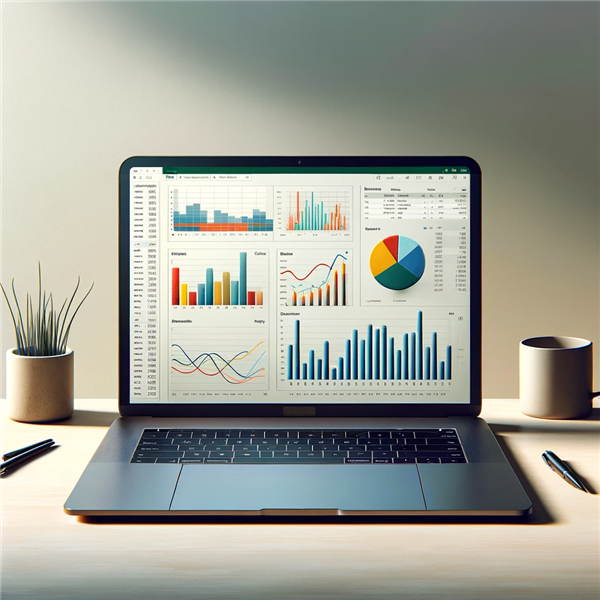
Microsoft Excel has long been the go-to tool for data analysis and reporting. In the world of business intelligence, Excel dashboards stand out for their ability to visually summarize and present complex data in an understandable and actionable format. As we look to the future, mastering Excel dashboards will become even more critical for professionals across various industries. Let's explore the evolving landscape of Excel dashboards and what it means for users and businesses alike.
Enhanced Data Visualization and Interactive Dashboards
The future of Excel dashboards lies in their increasing interactivity and sophistication in data visualization. Users can expect a more dynamic experience with dashboards that not only display static charts and graphs but also allow for real-time interaction with the data. This interactivity enables users to drill down into specifics, filter results, and customize views to uncover deeper insights.
- Advanced Chart Types: New visualization options such as heat maps, tree maps, and waterfall charts.
- Real-time Data Feeds: Integration with live data sources for up-to-the-minute reporting.
- Customizable Interfaces: Personalized dashboards that cater to individual user preferences and roles.
As businesses become more data-driven, the demand for skilled dashboard creators is soaring. According to a report by MarketsandMarkets, the global data visualization market size is expected to grow from USD 8.85 billion in 2019 to USD 19.20 billion by 2027. This growth signifies the increasing importance of data visualization tools like Excel.
Integration With AI and Machine Learning
Another exciting development in the future of Excel dashboards is the integration with Artificial Intelligence (AI) and Machine Learning (ML). AI-powered analytics can provide predictive insights, forecast trends, and even suggest actions based on the data within a dashboard. Machine Learning algorithms can help identify patterns and anomalies that human analysts might miss.
- Automated Data Analysis: AI algorithms that automatically interpret and highlight key metrics.
- Predictive Analytics: ML models that forecast future trends directly within dashboards.
- Smart Data Cleanup: Tools that utilize AI to detect and correct data inconsistencies.
These advancements not only enhance the capabilities of Excel dashboards but also streamline the workflow for those who manage them. As per a study by PwC, AI could contribute up to $15.7 trillion to the global economy by 2030, with enhanced productivity being one of the major drivers of this growth.
Customization and Personalization at Scale
The customization of Excel dashboards is becoming increasingly important as users seek to tailor their reporting tools to their specific needs. Customization includes everything from the design and layout to the specific metrics and KPIs tracked. Personalization at scale means that organizations can deploy dashboards that cater to individual departmental needs while maintaining a cohesive overall strategy.
- User-Defined Metrics: Dashboards that allow users to set and track custom KPIs.
- Role-Based Views: Tailored dashboard views based on the user's role or department.
- Branding and Theming: Options to incorporate company branding for a consistent corporate identity.
Customization not only improves the user experience but also drives better decision-making by ensuring relevant data is front and center. A survey by Forbes Insights found that 58% of executives believe that tailoring data and analytics to the needs of individual roles is important in driving operational and strategic outcomes.
Cloud Collaboration and Accessibility
The shift toward cloud computing has significantly impacted how Excel dashboards are accessed and shared. Cloud-based collaboration allows for seamless sharing and real-time updates to dashboards.





COMMENT